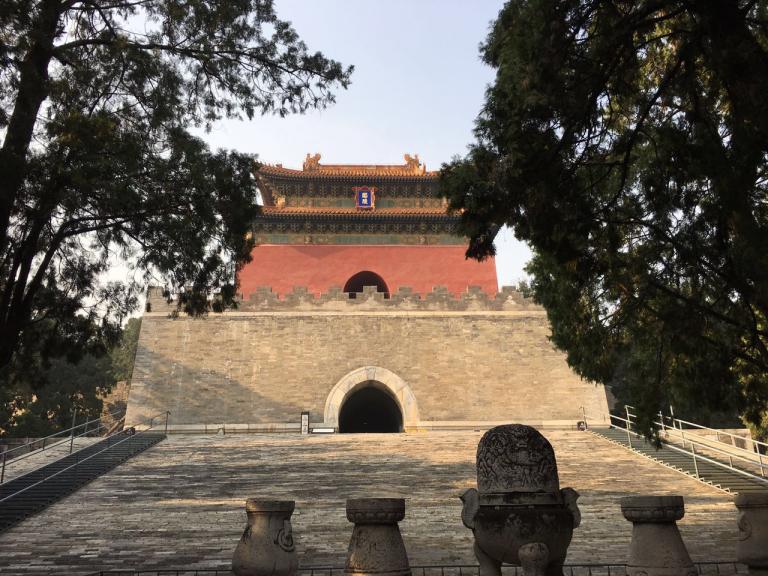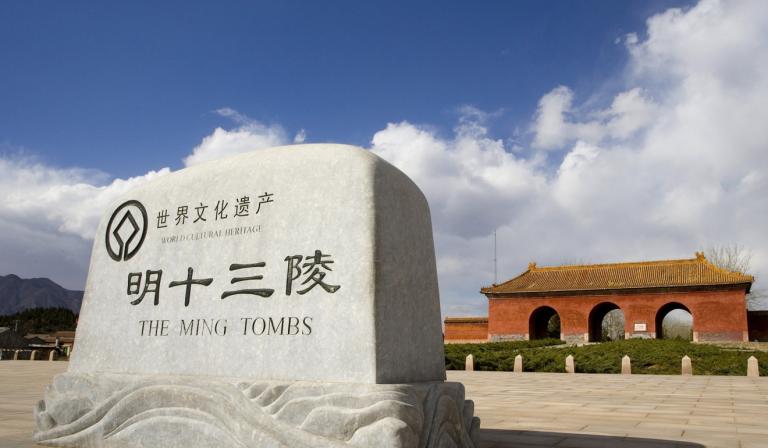Thirteen Ming Tombs
2 min readThirteen Ming Mausoleums refer to 13 tombs of the Ming emperors, which are located in Tianshou Mountain, Changping District, Beijing. It faces Chaozong River in the south, which is surrounded by mountains in the east, west and north. Many emperors’ tombs are located between the basin covering about 40 square kilometers. Initially built in the 7th year of Yongle Period (1409), Chang Mausoleum is the core of Thirteen Ming Mausoleums. It stands below the peak of Tianshou Mountain, with large scale and beautiful building. A 7km-long path is in front of Chang Mausoleum. On the path stands a large stone arch, Red Gate, stele pavilion, etc. Both sides see dozens of stone f gures and stone animals, while the other Mausoleums face to the center of Changling Mausoleum in the style of horseshoe distribution. The solemn atmosphere of Thirteen Ming Mausoleums also reflects family cohesion and affection.

Stone arch is located at the top end of path towards Thirteen Ming Mausoleums, which is a landmark at the entrance of Thirteen Ming Mausoleums. It is the lar gest existing stone arch in China, which was constructed in Jiajing Period. With f ve-room width, 6 columns and 11 f oors, it is made of white marble. The posts are carved with soft f owing cloud patterns. Crossing column stone is carved with lively and realistic unicorn, lion and other animals.
Plane of the mausoleums consists of two parts. The front plane is buildings with rectangular plane, and the latter plane sees circular mound. The mound is also known as “Treasure Dome” for covering underground palace. “Treasure Dome” is defended by surrounding walls, which is called as “Treasure City”. The tower stands in front, which is called as “Shining Building”. A huge stone desk is placed in front of “Shining Building”, on which f ve types of stone ceremonial vessels are in place, which are known as “f ve offerings”.
Lingen Hall of Chang Mausoleum has 9-room width, which is the largest existing ancient wooden building in China. It sees overlapping beam and hip roof, which is built on three-layer white marble pedestal. The roof is covered with yellow glazed tiles, which is magnificent. In Lingen Hall, 32 nanmu columns with diameter of more than 1 meter stand. Shape of this building is unique in China.
Ding Mausoleum is joint burial tomb for the 13th Ming emperor Zhu Yijun and two empresses, which was built during the 12th-18th year of Wanli Period (1584-1590). During 1956-1958, archaeologists excavated it, opened ancient underground palace, and found a large number of treasures. These treasures prove developed technology achievements of the Ming Dynasty.









